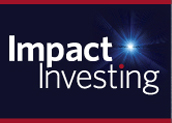Profit Goals
Impact investors vary in their expectations for profit. Some mandate “impact first,” meaning they will accept lower- than-market-rate returns in favor of a positive social outcome. Others, like Case, usually expect competitive returns with broad market indexes. About 35 percent of impact-investment funds target returns above 20 percent, according to a 2013 report by the World Economic Forum.
Charly and Lisa Kleissner have shifted almost all of their $10 million foundation’s assets to impact investments since 2005. They seek market-rate gains for their KL Felicitas Foundation’s assets, the couple said.
Family offices and private foundations have led the way in social-impact investing in the U.S. because they generally have more control over their assets and fewer restrictions on performance than pension funds and other investors, said Raul Pomares, founder of San Francisco-based Sonen Capital, which manages $300 million in impact investments including the Kleissner’s.
Direct Investments
Sonen has invested the Kleissner foundation’s money in different asset classes including public companies that are vetted for environmental, social and governance guidelines. The foundation also has put money with private-equity firms such as Zouk Capital LLP, which bets on environmental companies and has made direct investments in businesses including BioLite, a manufacturer of cooking stoves that reduce air pollution globally.
From 2006 through 2012 the foundation’s impact investments gained 2.56 percent annually, according to a report released by Sonen last year. That compares with a 2.38 percent gain by its benchmark, a weighted mix of broad-market indexes such as the S&P 500 and Barclays Aggregate. The three-year annualized returns were 4.4 percent for the foundation and 4.25 percent for its benchmark.
Jean Case said more money will move into a range of investments that focus on social issues.
“It’s 100 percent capital loss when you’re giving grants purely through philanthropy,” she said. “Then there’s the range of market-rate returns. We think there is room for investors to play in that spectrum.”
AOL Co-Founder Backs Brain Device And Pushes Do-Good Investing
September 5, 2014
« Previous Article
| Next Article »
Login in order to post a comment

